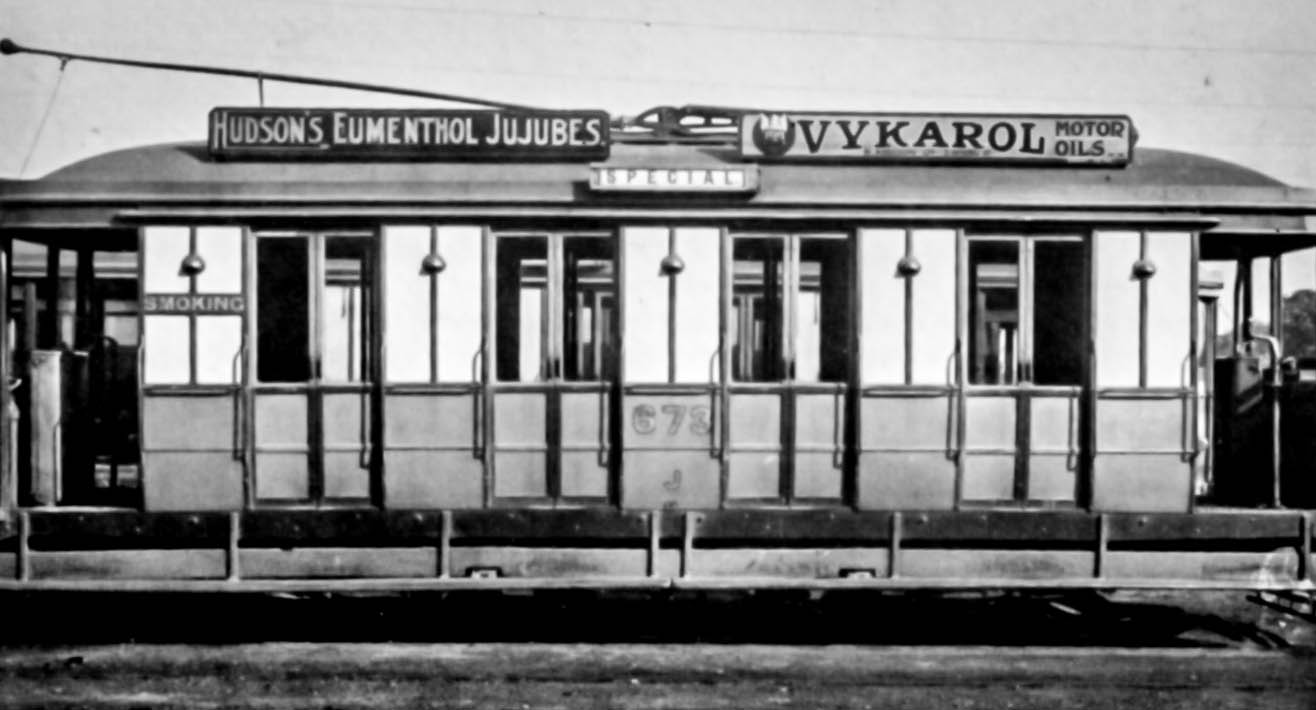|
Sydney Tram Classification
Steam trams of the 1880s and 1890s had separate numbers for motors and trailers within each separate system and the unified numbering scheme was not introduced for the electric tramcars until 1890. Classification A statewide numbering scheme was required as isolated electric segments became joined and rolling stock interchanged and major maintenance performed at Randwick Bus Depot, Randwick Tramway Workshops. In 1905 a general alphabetical classification was introduced to the NSW Government Tramways. In general lettering indicated: * A and B were given to steam stock * C through to N (and later O, P and R) to electric cars based on seating capacity. * T was planned for trailers but not displayed * S indicated general service, non-passenger carrying stock * U for ballast motors * V for ballast trailers * W for electric water sprinklers. New types of electric trams continued to be allocated letters, with the exception of I, Q, Y and Z. Classes References {{SydneyTramNavbox ... [...More Info...] [...Related Items...] OR: [Wikipedia] [Google] [Baidu] |
Randwick Bus Depot
Randwick Bus Depot is a bus depot in the Sydney suburb of Randwick operated by Transdev John Holland. History In 1881 the Randwick Tramway Workshops were established on the corner of Darley Road and King Street, Randwick as the main workshops for the Sydney tram network. It also had a depot attached. In 1902 the workshops were renamed the Randwick Tramway Workshops. The workshops grew rapidly to become one of Sydney's largest engineering establishments peaking in the 1920s. and performed all heavy maintenance on the fleet, Randwick Workshops were also instrumental for the construction of the L and LP classes that were completely rebuilt from the F class. O/P class, The PR and 2 of the PR1 classes were all converted by Randwick workshops out of trams that had been involved either in accidents or required major overhaul. During World War I and World War II workers from the Tramways Workshops were diverted to manufacturing armaments and artillery. The 1917 General Strike be ... [...More Info...] [...Related Items...] OR: [Wikipedia] [Google] [Baidu] |
Sydney J-Class Tram
The J-class trams were built as replacements for the King Street to Ocean Street, Edgecliff cable line designed to provide a frequent schedule, but with a lower seating capacity. Some briefly operated on the Manly lines in 1911. Withdrawals commenced in 1934 with the entry of the R Class R class or Class R may refer to: Locomotives * LCDR R class, a British steam locomotive class *NER Class R, a British steam locomotive class *NZR R class, a type of New Zealand steam locomotive *Rhymney Railway R class, class of tank locomotive * V ... trams, with all out of service by 1936. Preservation One example has been preserved: *675 at the Sydney Tramway Museum References Further reading * * External links {{DEFAULTSORT:J class tram Sydney tram vehicles ... [...More Info...] [...Related Items...] OR: [Wikipedia] [Google] [Baidu] |
Sydney R Class No 1923 At Sydenham, 20 November 1954
Sydney ( ) is the capital city of the state of New South Wales, and the most populous city in both Australia and Oceania. Located on Australia's east coast, the metropolis surrounds Sydney Harbour and extends about towards the Blue Mountains to the west, Hawkesbury to the north, the Royal National Park to the south and Macarthur to the south-west. Sydney is made up of 658 suburbs, spread across 33 local government areas. Residents of the city are known as "Sydneysiders". The 2021 census recorded the population of Greater Sydney as 5,231,150, meaning the city is home to approximately 66% of the state's population. Estimated resident population, 30 June 2017. Nicknames of the city include the 'Emerald City' and the 'Harbour City'. Aboriginal Australians have inhabited the Greater Sydney region for at least 30,000 years, and Aboriginal engravings and cultural sites are common throughout Greater Sydney. The traditional custodians of the land on which modern Sydney stands are ... [...More Info...] [...Related Items...] OR: [Wikipedia] [Google] [Baidu] |


